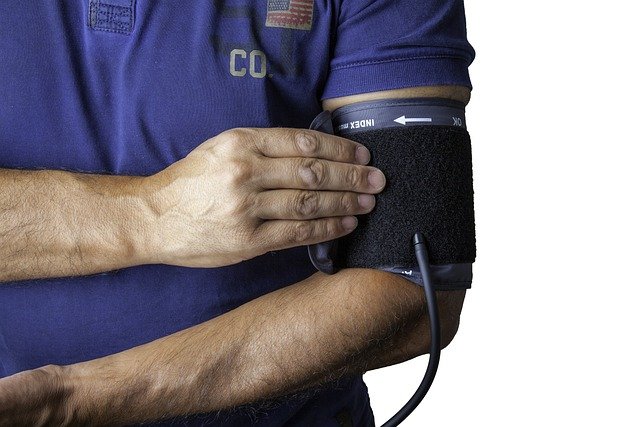How Lifestyle Changes Affect Your Testing Needs
Lifestyle changes — such as altering diet, increasing activity, quitting smoking, or beginning new medications — can change what medical tests you need and how often you should have them. Understanding how prevention, routine monitoring, and access to services influence testing helps you and your clinician make informed decisions about labs, diagnostics, and followup care.

Lifestyle changes can shift the types and frequency of medical testing you need. When habits, environments, or life stages change, they alter risk profiles, biomarkers, and the value of specific diagnostics. Tests that were once routine may become less relevant, while new screening or monitoring may be warranted. This article outlines common scenarios where lifestyle adjustments influence testing for prevention, monitoring, and long-term care decisions.
This article is for informational purposes only and should not be considered medical advice. Please consult a qualified healthcare professional for personalized guidance and treatment.
Prevention and testing
Prevention-focused care emphasizes identifying and reducing risk before symptoms appear. If you adopt healthier habits—such as improved nutrition, regular exercise, or smoking cessation—your clinician may reassess the need for some screening tests. For example, risk reduction can change recommendations for cardiovascular screening or metabolic panels. Prevention also includes vaccinations and age-appropriate screenings; lifestyle improvements can lower the probability of abnormal results but do not eliminate the need for scheduled prevention checks.
How often should I schedule checkups?
Checkups serve as routine opportunities to review risk, update medications, and order necessary labs. Frequency depends on factors like age, existing conditions, medications, and recent lifestyle changes. For someone who begins a structured exercise program or loses significant weight, a clinician may recommend an earlier checkup to review medications, blood pressure, and glucose. Conversely, improved control of chronic conditions may allow longer intervals between visits, provided regular monitoring remains in place through labs or telehealth followup.
When do labs become more important?
Changes in diet, alcohol intake, supplement use, or medications often affect lab values. Starting cholesterol-lowering or blood-pressure medications usually triggers baseline and followup labs to confirm effectiveness and monitor side effects. Similarly, major dietary shifts—such as adopting a very low-carbohydrate diet or increasing protein—can alter kidney function markers and lipid profiles, making periodic labs helpful. Access to local services or telehealth can influence how conveniently these labs are scheduled and reviewed.
How do risk factors change diagnostics?
Individual risk factors—family history, smoking status, occupational exposures, and aging—shape diagnostic pathways. Quitting smoking or reducing alcohol lowers certain cancer and cardiovascular risks, which may change screening priorities. However, aging itself increases risk for many conditions; even with healthy lifestyle choices, age-related screening (e.g., colorectal or bone density assessments) may still be recommended. Diagnostics should therefore align with both modifiable behaviors and immutable risk factors to form a balanced assessment.
What goes into a medical assessment?
An assessment combines clinical history, physical exam, and targeted tests. When a patient makes a lifestyle change, clinicians review new exposures, symptom changes, and goals to decide which diagnostics are needed. Telehealth can streamline parts of the assessment, enabling symptom checks and medication reviews remotely and helping determine if in-person labs or imaging are necessary. Access to local services affects how quickly testing can be performed and followed up on after the initial assessment.
When is bloodwork and followup needed?
Bloodwork often provides objective measures of change after a lifestyle intervention. Examples include lipid panels after dietary changes, HbA1c for glucose control when weight or activity levels change, and liver enzymes with changes in alcohol use or certain supplements. Followup intervals vary: some tests require reassessment in weeks (e.g., medication side effects), others in months (e.g., metabolic adjustments). Consistent followup—whether in person or via telehealth—ensures abnormal results prompt timely diagnostics and therapeutic adjustments.
Changes in lifestyle can affect not only which tests are useful but also how results are interpreted. Clinicians consider recent behaviors, seasonal variations, and the context of changes when evaluating labs and imaging. Access to local services and telehealth options plays an important role in making monitoring feasible and timely. For people aging into new risk categories, even positive lifestyle changes rarely remove the need for age-related screening; rather they modify the urgency and frequency of followup and diagnostics.
Conclusion Lifestyle changes influence testing needs by altering risk profiles, biomarker expectations, and the practicality of ongoing monitoring. Preventive care, routine checkups, targeted labs, and structured assessments should be adjusted to reflect new behaviors, aging, and access to services. Regular communication with a qualified clinician—using in-person visits, local services, or telehealth—helps align diagnostics and followup with current needs and goals.





